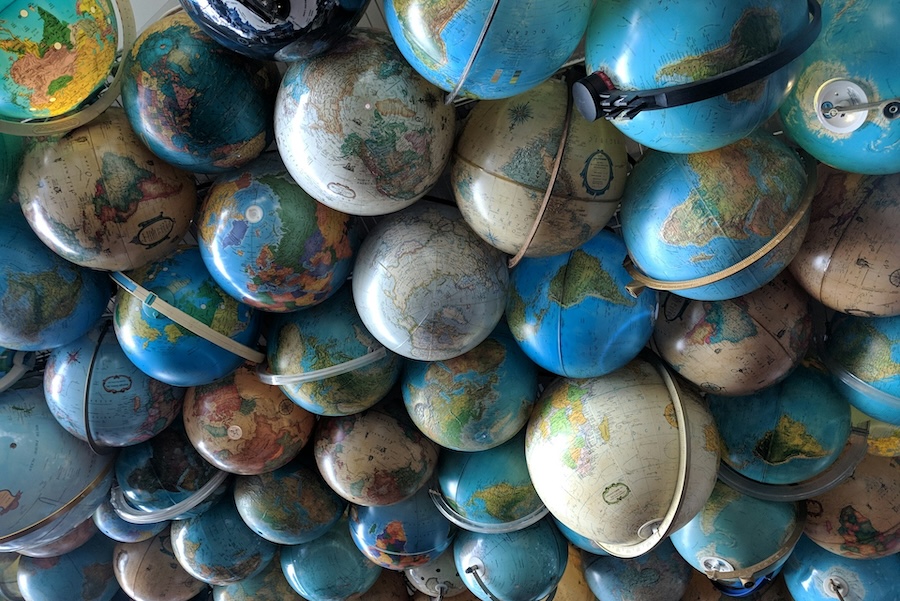Emigration is an attempt to preserve one’s scientific identity in a world where borders have become an instrument of violence—and science an act of resistance.
At the request of the authors, names are not published.
Photo: Most of those who left received invitations thanks to contacts with colleagues abroad. Photo by Thiago Santos on Unsplash
More than a million people have left Russia since the outbreak of the full-scale war in Ukraine. Among them are a significant number of people in intellectual professions. This wave is already being called a new “brain drain”—the largest since the 1990s.
Although the majority of those who have left have resettled in Europe and formerly Soviet countries neighboring Russia, many Russian scientists have also moved to the United States. They have become the focus of our ongoing research, which began in May 2024.
About the Project
We conducted 32 deep interviews (each up to three hours long) with Russian scientists who left the country after the start of the war and who, at the time of the interview, had lived in the US or worked at an American university for at least the preceding two years.
The goal of the project is to understand:
- what challenges Russian scientists face on the path to emigration and adaptation
- how their professional life is developing in the new academic environment
- how the current wave of emigration differs from the one that occurred in the 1990s
Through personal stories, we aim to document the changes taking place in both Russian and American science.
Who Are the New Emigrants?
- Our respondents are representatives of both the STEM disciplines and the humanities and social sciences.
- The vast majority of them moved from Moscow and St. Petersburg.
- Many worked in leading universities (HSE University, RANEPA, Moscow State University, St. Petersburg State University, Skoltech, etc.).
- Some held leadership positions
- Almost all of them had a Candidate of Sciences or Doctor of Sciences degree*
- In the US, a significant portion continue to work at top-level universities, from Harvard and Princeton to MIT and Yale.
* The Russian academic degree system includes two main postgraduate degrees: the Candidate of Sciences (Kandidat Nauk), roughly equivalent to a PhD, and the Doctor of Sciences (Doktor Nauk), a higher doctoral degree.
This profile may reflect the specifics of the American academic market, where the most recognized and professionally successful scientists are in demand. At the same time, it underscores the high professional level of the Russian scientists who have been forced to emigrate.
How the Two Waves Differ
The emigration of the 1990s and the current wave differ in terms of both reasons for leaving and their professional composition.
In the 1990s, it was mainly scientists in the natural sciences who left for the United States, especially those of Jewish nationality, who faced discrimination in the USSR. The fading Soviet sciences were experiencing an institutional crisis exacerbated by the economic collapse. Scientists were looking for material stability (both personal and institutional), which would allow them simply to continue doing research.
In the war-led brain drain, a significant proportion of emigrants are from the humanities and social sciences, a significant change from the wave of the 1990s.
Our respondents emphasize that, given significant investments in science in recent years, their choice was determined primarily not by economic circumstances, but by political and ethical ones.
For researchers in the social sciences, the increased ideological pressure was a decisive factor.
But for every one of our respondents, from mathematicians and biologists to sociologists and humanities scholars, the most important reason for emigration was the fear of the international isolation of Russian science, which is inevitable due to the outbreak of war, and the impossibility of continuing to engage in “real science” under such conditions.
Professional Identity and Academic Networks
Unlike the emigrants of the 1990s, many of whom were willing to work outside of academia, today’s scientists do not see themselves working outside of scientific fields.
“I haven’t considered any other employment [besides as an academic] for 25 years. If my first choice is looking for a job at an English-language university, then my second would be working in Russia as it is now, and my third would be to retrain. And I would have to be practically dying of starvation first” (male, sociologist, 47, professor in Russia).
They moved to the US on professional visas and took up academic positions. Even those who could theoretically find industry work (economists, biologists, IT specialists) hope to remain in the sciences, even if just “as a hobby:”
“No, of course I’m not ready [to leave research work behind]. If I have to, I’ll work with data, say, at a bank, from Monday to Friday, and on Saturdays and Sundays I’ll work with my own data. Because yes, it is different. I study what interests me” (female, economist, 53, professor in Russia).
Their professional international connections played a key role: most received invitations to the US through contacts with colleagues abroad. Often, the story begins with an urgent departure, a couple of letters to acquaintances abroad, and a quick offer of a temporary position.
This is in stark contrast with the situation in the 1990s, when job searches could last months, and even years.
“The very next day, my colleagues helped me find a job in Germany. […] I worked for seven months at the Max Planck Institute and simultaneously found a job in America. My colleagues also helped—that is, we have a good network. I am incredibly grateful to all my colleagues who actively joined in helping me.” (male, biologist, 30, PhD student)
“I wrote on Facebook that I had spoken out against signing the military statement [at the university] and left. And this information reached my colleagues at Princeton. After which one of these colleagues wrote to me and recommended that I apply to their program that they had just formed.” (male, political scientist, 45, professor, dean in Russia)
“Many people immediately found out that I was arrested [for participating in an anti-war rally], and they offered to help. The next day, after I was released, I was able to go to Paris. […] I had an invitation to work for six months. Two months later, I received an invitation from Harvard and MIT for two years.” (male, mathematician, 52, professor in Russia)
What Has Changed in Academia?
Our research also reflects profound transformations in the academic environment itself. Russian science has become international—many respondents are participants in transnational projects.
“Scientists traveled to different countries, came back, understood what they wanted to do, what equipment to buy. Substantial grants started popping up [in Russia]. Many scientists—of those who left in the 90s—returned. And therefore the scientific communication network that was built between scientists from different countries worked very well in Russia during this period, because people came from different countries. In general, it felt like we were one with the world; that we were the same, not some outsiders; that we were perceived as full-fledged members of the scientific community. Therefore, for me, the very concept of a scientist having a national identity seemed a little strange” (male, biologist, 30, PhD student).
American academia, in turn, has become more flexible and open. The number of temporary visiting positions, fellowships, and programs for scientists from vulnerable regions has increased. Unlike the rigidly structured European systems, U.S. academia provides more space for individualized solutions.
This is what allowed Russian scientists to quickly find temporary academic positions.
Adaptation Strategies
The success of integration depends significantly on the discipline.
Scientists in STEM adapt more easily: their research topics are universal, their laboratories are set up in a similar way, and work in international teams continues—just now from the US.
Folklorists and other researchers in the humanities, whose subjects and topics are tied to Russia, find support in the recognition of the Russian scientific tradition in these areas.
For social scientists, the situation is more difficult. Despite their professional achievements, the Russian social sciences have not yet formed stable schools with international influence. Research often focuses on the Russian agenda, which is less in demand in the United States. This complicates finding a job and integrating into the American academic community.
Researchers or Refugees?
Many respondents talk about the duality of their position. They see themselves as scientists eager to continue research, apply for grants, organize seminars, and publish. However, their host universities often see them primarily as refugees. And the positions they receive do not always involve active scientific productivity.
On the one hand, such positions provide a livelihood and look good on a resume. On the other hand, they are temporary (from three months to a year), provide no future job security, and require people to constantly search for the next opportunity:
“I spent the last year looking for something permanent, and I was looking not only in the States, but all over the world. […] I sent out applications rapid-fire, like a machine gun. I submitted 146 applications this year. Sixty to eighty of them were thematically close to my discipline, and the rest were just on luck” (male, biologist, 53, professor in Russia, head of a laboratory)
Visa restrictions (particularly the specifics of J1 visas, as well as lengthy screening procedures, for example, for biologists and chemists) and the high cost of living in the United States make finding positions especially problematic.
* * *
The emigration of Russian scientists to the United States today is not just a story about departure. It is a story about values, about an attempt to preserve scientific identity in a world where borders have become an instrument of violence—and science an act of resistance.
It is also a story about changes in academia itself, both in Russia and America, over the past thirty years.
And perhaps this is a chance to rethink what science should be—global, open, and truly collaborative.





0 Comments